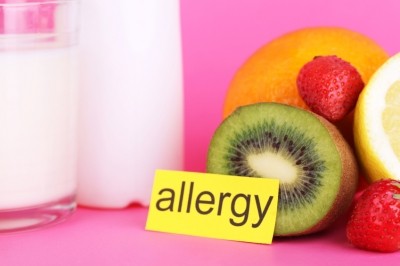FDA investigating mass spectrometry for allergen analysis

Unlabeled allergens continue to be the leading cause of recalls and of reportable foods for US.
Allergens were the single largest cause of food recalls in Q3 last year, representing 40%.
They had been the first or second largest cause of food recalls in the past seven quarters, according to ExpertRECALL data at the time.
Mass spectrometry for allergen analysis
Mass spectrometry determines the allergen protein content of a complex mixture of proteins, fats, sugars, and chemicals in a food.
Enzyme-linked immunosorbent assay (ELISA) is the standard test because it is easy to use, relatively low-cost, and modified over time.
But it can produce false positive results and some allergens are so similar that scientists need another test to tell them apart.
Mark Ross, an FDA chemist, told FoodQualityNews.com that mass spectrometry is at an early stage in food allergen analysis.
“There is interest because of a number of facts, the molecular specificity, detection of proteins, high sensitivity and it can detect multiple allergens in the same analysis," he said.
“Mass spectrometry methods require expensive instruments and skilled technicians. The methods we are investigating for food allergen analysis are based on similar methods developed when the technology was used in human biology.”
Ross said more research and development is required but the potential is significant enough to expand its use because of the capabilities.
FDA is also trying to reduce the number of recalls by researching the causes of errors and working with industry on best practices.
The Food Allergen Labeling and Consumer Protection Act of 2004 (FALCPA) defined a major food allergen as one of eight foods (egg, milk, peanut, soy, fish, crustacean shellfish, tree nuts and wheat).
A food product with a label that omits allergen information is misbranded and can be seized by FDA.
Allergen recall data
Steven Gendel, FDA food allergen coordinator, has looked through FDA-collected recall data.
From September 2009 to September 2012, about one-third of foods reported to FDA as serious health risks involved undeclared allergens.
The five food types most often involved were bakery products; snack foods; candy; dairy products and dressings (such as salad dressings, sauces and gravies).
Allergens most often involved in recalls were milk, wheat and soy.
Gendel with colleagues Jianmei Zhu, Nichole Nolan and Kathy Gombas wrote a paper earlier this year which built on a paper by Gendel and Zhu last year.
They found the most important lesson was that many recalls were caused by simple problems and could have been easily avoided.
“For example, the food industry could implement a regular review process to look for formulation changes in products and ingredients, which is not complicated or time consuming but can provide insurance against unexpected serious problems," they said.
“Similarly, double checks of packages and labels before they are used to ensure that they match the product being produced can be carried out in seconds and can avoid costly mistakes.”
Another finding was packing and label controls are as important for allergen control as sanitation and Good Manufacturing Practices (GMPs).
Using the wrong label can happen when similar products made with different ingredients, including allergens, are sold in look-a-like packages.
Gendel also found mistakes associated with the use of new technologies, such as computerization and the ability to print labels directly on packaging.
“We don’t know why [undeclared allergens are the leading cause of recalls] because the data is specific to allergens relevant to FDA and not all recalls,” he told FQN.
“The best advice is to pay attention, problems are easily avoided by checking and controlling labels during production.
“We don’t have reference methods for allergen analysis, we use validated AOAC methods and other controls. Each manufacturer must ensure that tests they do are appropriate for their situation.
“Industry is concerned and we have worked hard with the Grocery Manufacturers Association and companies to understand all the pieces.”
He added the Food Safety Modernization Act requires new rules which will modernize GMP and include guidance documents on allergen control.





















